
Non-Golden Ring of Russia. Borovsk
/ Главная / Russkiy Mir Foundation / Publications / Non-Golden Ring of Russia. BorovskNon-Golden Ring of Russia. Borovsk
Anna Genova
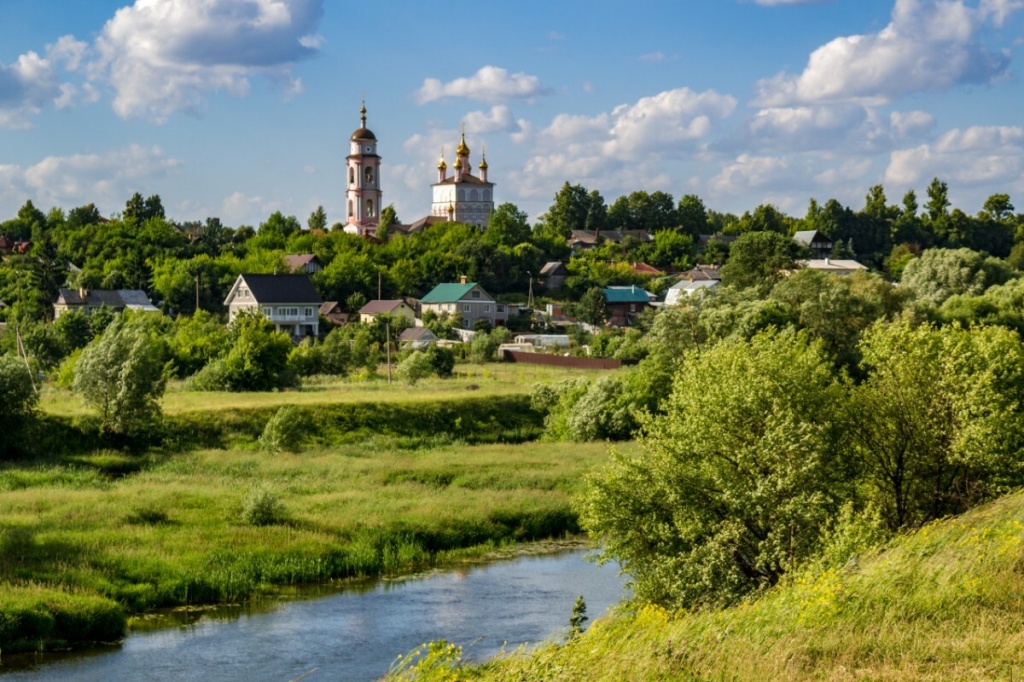
Voyagers can get to the city from the Moscow Kiev railway station by train to Balabanovo station, from there by bus. But the most convenient option is by car. The town itself is not so small, there are over 10 thousand inhabitants. Not everyone can walk through it at once.
To make an example, an absolute must visit is a 100% wooden Church of the Intercession on Vysokoe, which is located in the outskirts, a couple of kilometers from the city center. Built in the late 16th - early 17th centuries, the church was made out of the pine trees and placed on a stone foundation. It is the only wooden cathedral in the Kaluga region built without a single nail.
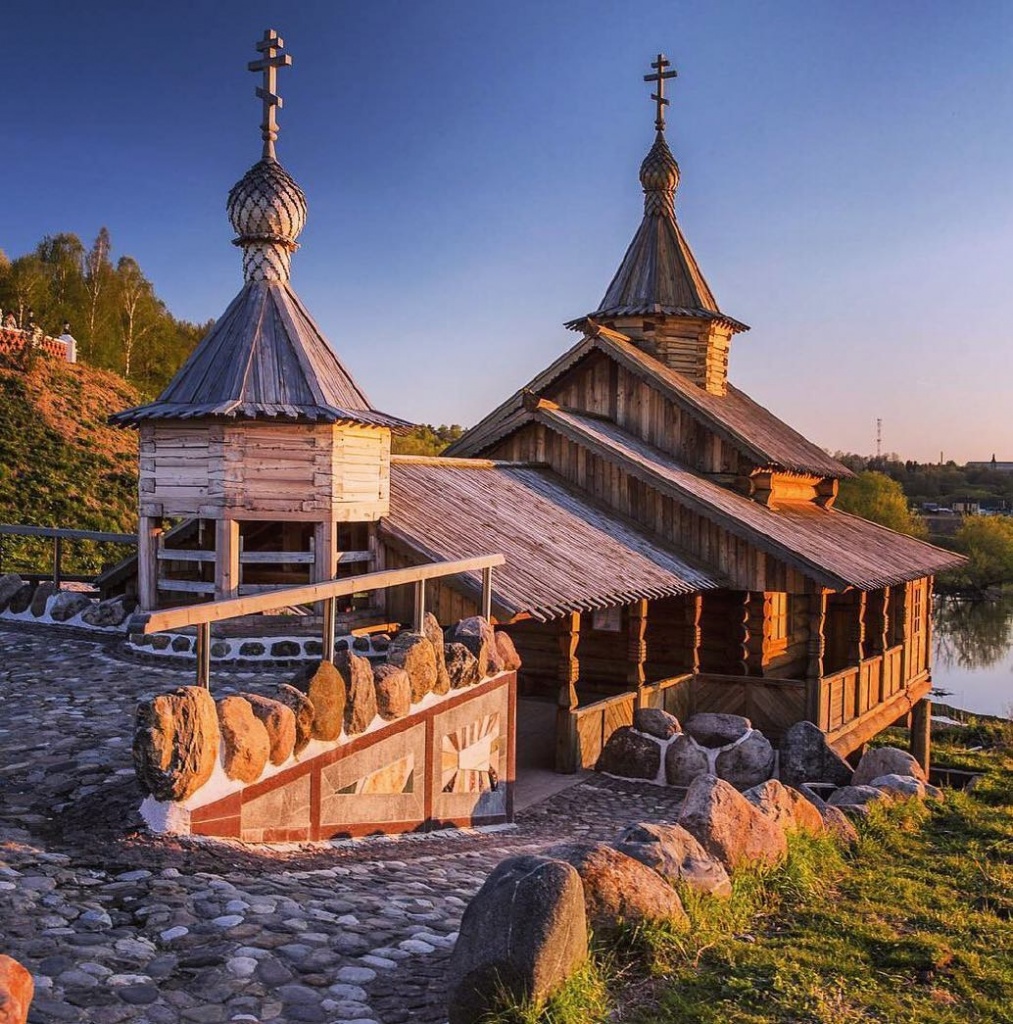
Photo: Church of the Intercession on Vysokoe
There was a monastery earlier at this place. It was founded by the Borovsk prince Simeon Vladimirovich and the Monk Nikifor, the Sergius of Radonezh disciple. The monastery moved to the other side of the river already under the leadership of the Monk Paphnutius. Local residents and tourists go to visit not just for religious needs, but also just to make a walk during good weather, enjoying beautiful views and the mightiness of the white-stone monastery ensemble. Some of them take a chance to get water from the holy spring. For those who decide to stay overnight, there are several budget hotels nearby.
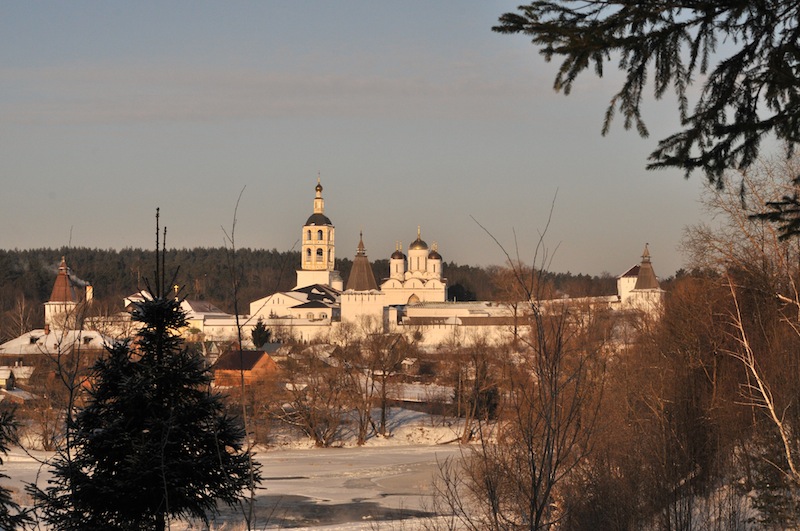
Photo: Pafnutevo-Borovsky Monastery. Photo credit: The Pafnutevo-Borovsky Monastery website
Borovsk has been called “the city of churches” before the Russian Revolution. There were 30 churches in the Borovsk district and 10 of them in the city itself, including 3 for Old Believers (although only one is open today).
Let's return to the Church of the Intercession on Vysokoe, which rises on the banks of the Protva River. From the church balcony you can see a panorama of the surrounding natural beauty and the majestic monument to Paphnutiy Borovsky, the founder of the current male monastery.
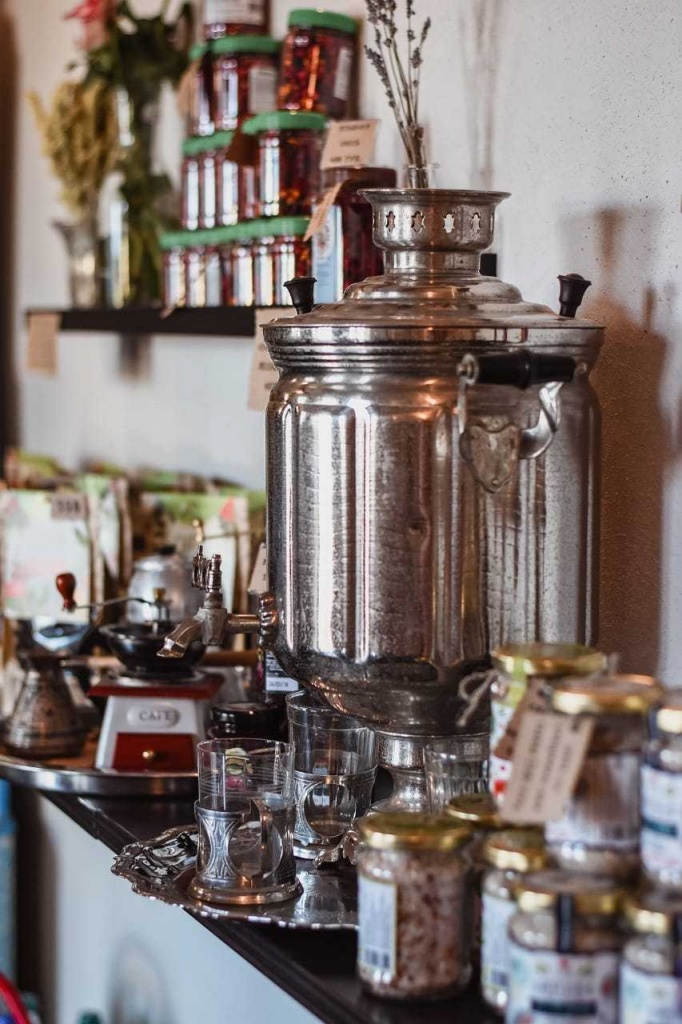
There is a Tea Room on the High refectory in just one-minute walk from the monument and the church. It is a cozy cafe with Russian style vibe with a huge stone oven. It attracts both locals and visitors, and especially families with children. “Artsy dumplings, a crucian carp fried in sour cream, beet borscht in a Khokhlatsky style with ham and sausages, or hot, fiery cabbage soup. Sturgeon solyanka, roast, pheasants and turkey, mushrooms and pies, pirozhki with cherry jam and rolls.” This is how one of the cafe visitors describes his impressions in touristic blog. Below, by the river, there is a Holy Spring of the Protection of the Mother of God and a baptismal font with separate male and female entrances. After swimming in a river spring, people warm up with hot herbal tea with rolls in the Tea Room .
By boat on warm days, otherwise by taxi you can get to the other side of Protva river, where the Museum-Apartment of Konstantin Tsiolkovsky is located.
The outstanding autodidact scientist lived in Borovsk for 12 years. He worked as physics and mathematics teacher in a local school. Sometimes pupils were coming directly to his house. Tsiolkovsky organized practical lessons explaining electricity and other physical phenomena. After classes, he would go to the the river bank to play with a paper hot air balloon. For kids he was more than just a teacher. “I always liked new activities. I decided to make a sleigh with a wheel so that everyone would go to sit and swing the levers. The sleigh had to race the ice. Then I replaced this structure with a special sailing chair. Peasants rode along the river. The horses were frightened by the rushing sail, and the passers-by were cursing. Due to my deafness, I did not know about it for a long time ... ” Tsiolkovsky described his experiments in Borovsk with a certain sense of humor. The monument to Tsiolkovsky here is as cozy as the town itself - a small figurine of an inventor in a coat and felt boots, looking up; it is located right in the center.

Photo: K. Tsiolkovsky monument
Borovsk locals, especially children, loved their own "Leonardo". There's another person that could be called “Leonardo of Borovsk” nowadays. It is self-taught 82-years old artist Vladimir Ovchinnikov, who created more than a hundred murals on a variety of topics, from biographical to literary, sometimes with famous people quotes, sometimes with poems by his wife Elvira. Over last 20 years he turned the city into an open-air museum. There's no need to search for his art, it pops-out from almost every wall in the center.
Ovchinnikov started painting buildings in the early 2000s, with the consent of the home owners. His largest fresco Globus of Borovsk welcomes the city guests. It is worth taking a walk to get a closer look at murals of Russian writers Nekrasov and Gogol, the hilarious peasant with a huge cucumber and a poem about it, the traveler Fyodor Konyukhov, and also the huge face of cult Soviet singer-songwriter Vysotsky, real pieces of Russian naive art. Original frescoes are located mainly in the center - on Lenin Square, along the Bolshaya Communisticheskaya and Lenin streets.
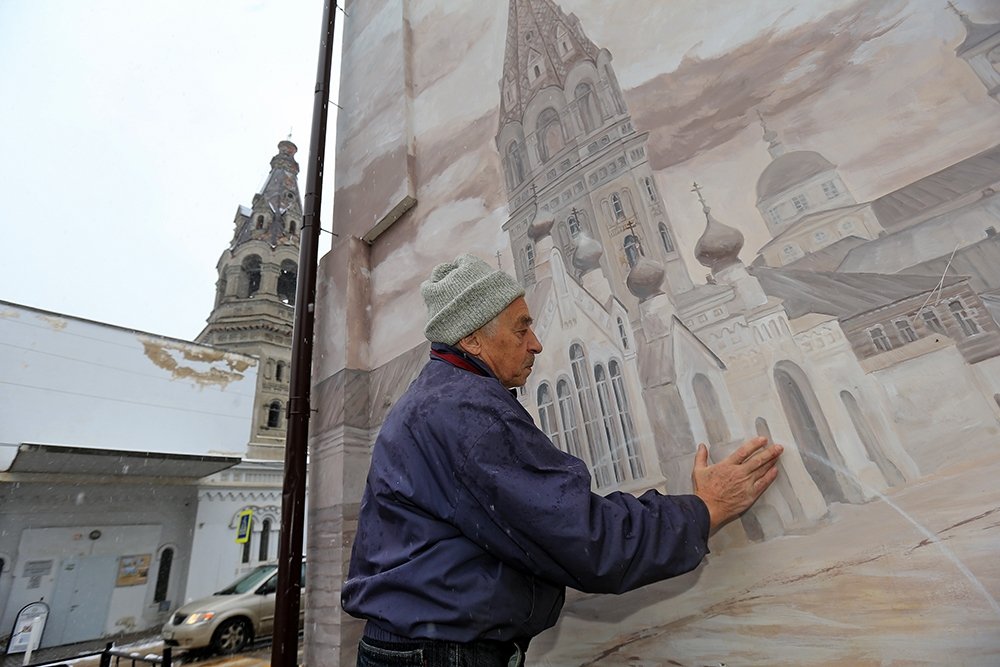
Photo: Vladimir Ovchinnikov
Ovchinnikov is not only an artist but also is a real regional ethnographer. He's written The Shot Future book, dedicated to political persecution of Borovsk locals during Stalin's times.
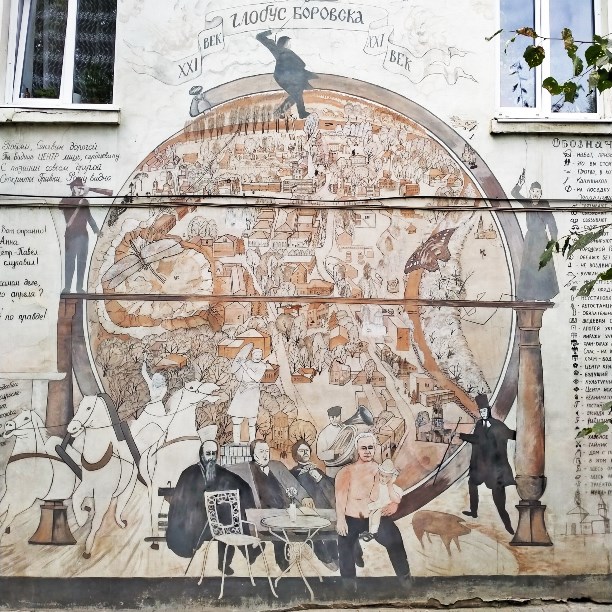
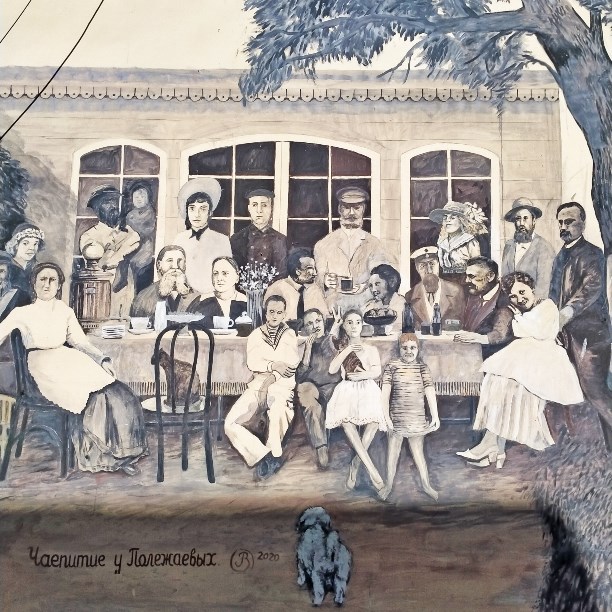
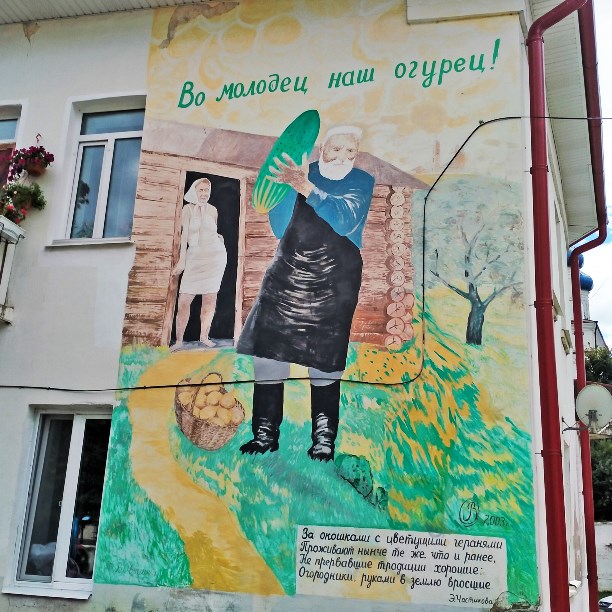
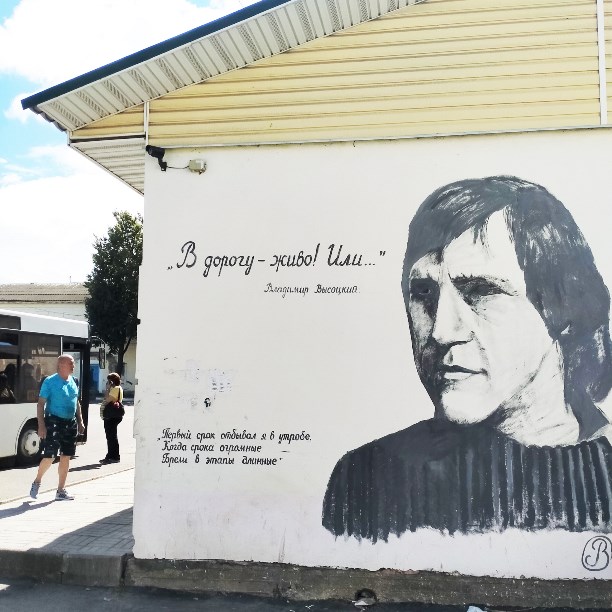
By Ovchinnikov efforts, yet another landmark appeared in Borovsk few years ago with a help of volunteers, local students and schoolchildren. Ago. The Space Ark is made from a former 10-meter concrete collector. The art object is located on the other side of the river. While crossing the bridge, you can admire charming landscape of woody hills with small colorful houses. The Space Ark can be found at the forest clearing. It looks like an old UFO with a “crew” of 19 people, including Yuri Gagarin, Valentina Tereshkova, Sergei Korolev, of course Konstantin Tsiolkovsky, as well as Stephen Hawking, Nikola Tesla, astronaut Neil Armstrong, even Elon Musk and other prominent people.
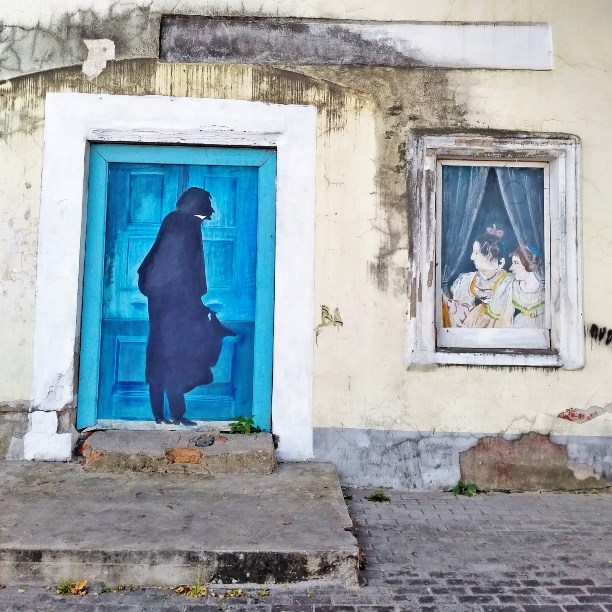
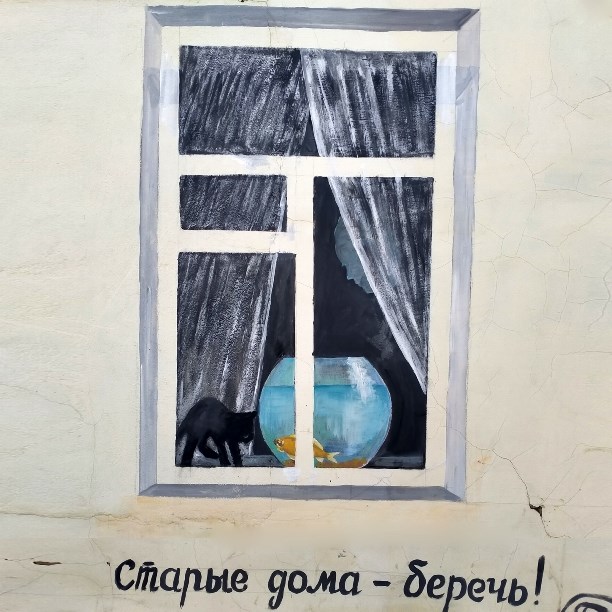
Photos: Ovchinnikov's murals
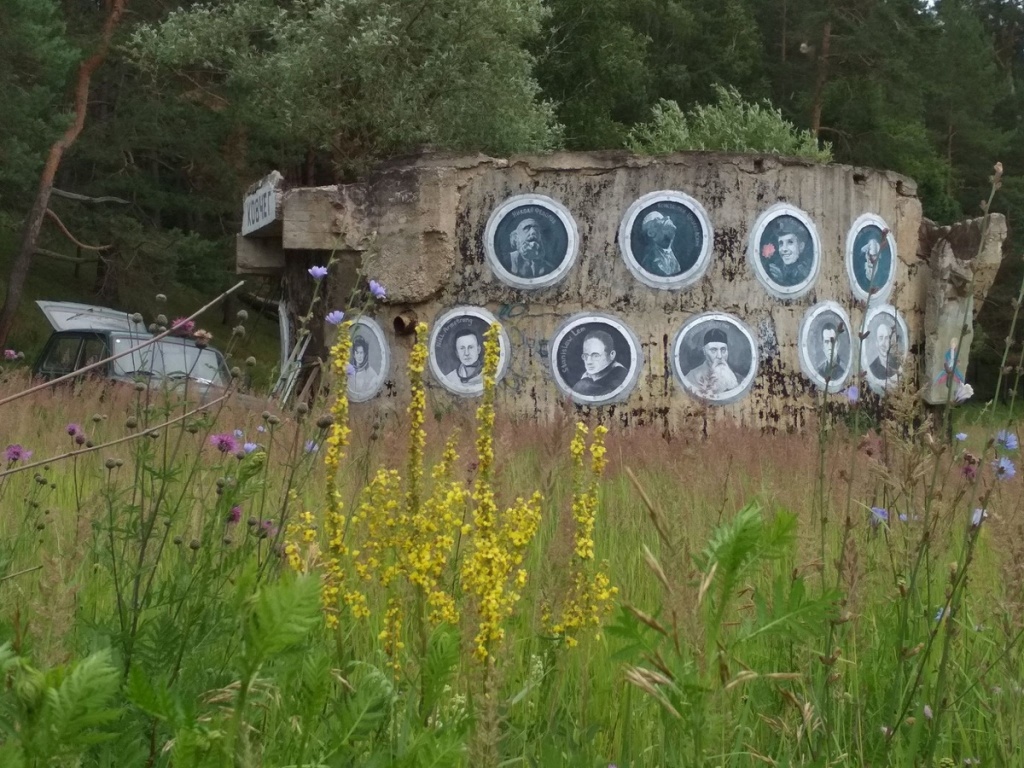
Photo: The Space Ark
Once back in the center, be sure to visit the shopping arcade, that accommodated more than hundred different shops and bakeries since the end of the 18th century. It is easy to find locate it on Lenin Square, with a detailed map of the city. At the same place guided tours start and end. Also, there are several authentic eateries nearby.
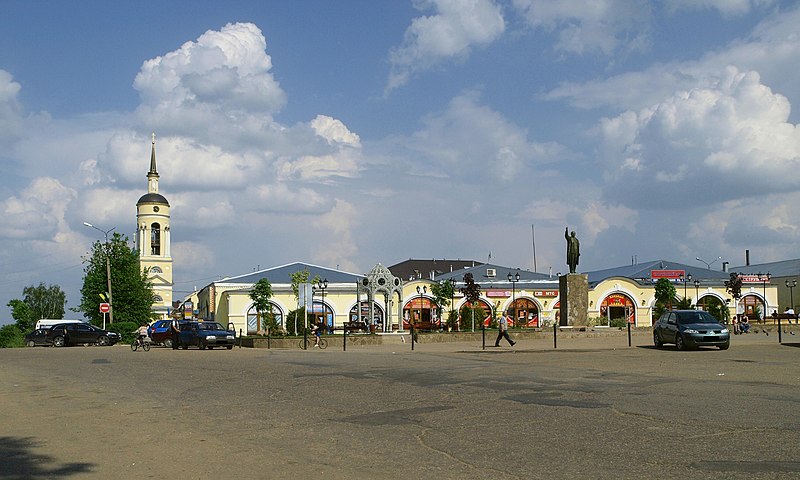
Photo: Shopping arcade in Borovsk. Photo credit: NVO / commons.wikimedia.org
The Yozhikov textile factoryis one of the buildings worth visiting. It can be found on the Lenin Square as well. As the founder of the textile industry, the Borovsk entrepreneur took an active part in the life of his native city, allocating funds for the local buildings' construction. A little later, Yozhikov business expanded, merging his business of another family, and Yozhikov became the founder of a trading house. Of course, Russian Revolution swiped out all his activity.
Another place where you can start and finish your town walk, or just stay for a while enjoying delicious non-alcohol pumpkin mulled wine or local tea with marshmallow, or look at some original souvenirs, or check out exhibition on the first floor is the House of Happiness... this place often hosts famous musicians and artists. Recently they hosted guests of the Teacher for Russia project, and celebrated the Day of the Ecologist. The owners are new generation people who create such a cool vibe around that even Muscovites feel like they want to move to Borovsk. By the way, there are such people among my friends.
New publications

 Mikhail Kalatozov, a director who transformed the world of cinematography in many ways, was born 120 years ago. He was a Soviet film official and a propagandist. Above all, he was capable of producing movies that struck viewers with their power and poetic language.
Mikhail Kalatozov, a director who transformed the world of cinematography in many ways, was born 120 years ago. He was a Soviet film official and a propagandist. Above all, he was capable of producing movies that struck viewers with their power and poetic language.  Ukrainian authorities have launched a persecution campaign against the canonical Ukrainian Orthodox Church (UOC), the biggest one in the country's modern history. Over the past year, state sanctions were imposed on clergy representatives, searches were conducted in churches, clergymen were arrested, criminal cases were initiated, the activity of the UOC was banned in various regions of the country, and monasteries and churches were seized.
Ukrainian authorities have launched a persecution campaign against the canonical Ukrainian Orthodox Church (UOC), the biggest one in the country's modern history. Over the past year, state sanctions were imposed on clergy representatives, searches were conducted in churches, clergymen were arrested, criminal cases were initiated, the activity of the UOC was banned in various regions of the country, and monasteries and churches were seized.  When Nektary Kotlyaroff, a fourth-generation Russian Australian and founder of the Russian Orthodox Choir in Sydney, first visited Russia, the first person he spoke to was a cab driver at the airport. Having heard that Nektariy's ancestors left Russia more than 100 years ago, the driver was astonished, "How come you haven't forgotten the Russian language?" Nektary Kotlyaroff repeated his answer in an interview with the Russkiy Mir. His affinity to the Orthodox Church (many of his ancestors and relatives were priests) and the traditions of a large Russian family brought from Russia helped him to preserve the Russian language.
When Nektary Kotlyaroff, a fourth-generation Russian Australian and founder of the Russian Orthodox Choir in Sydney, first visited Russia, the first person he spoke to was a cab driver at the airport. Having heard that Nektariy's ancestors left Russia more than 100 years ago, the driver was astonished, "How come you haven't forgotten the Russian language?" Nektary Kotlyaroff repeated his answer in an interview with the Russkiy Mir. His affinity to the Orthodox Church (many of his ancestors and relatives were priests) and the traditions of a large Russian family brought from Russia helped him to preserve the Russian language.

 The leaders of the Friends of the Great Russia cultural association (Amici Della Grande Russia) in Italy believe that the Western policy of abolishing Russian culture in Europe has finally failed. Furthermore, it was doomed to failure from the beginning.
The leaders of the Friends of the Great Russia cultural association (Amici Della Grande Russia) in Italy believe that the Western policy of abolishing Russian culture in Europe has finally failed. Furthermore, it was doomed to failure from the beginning.  Name of Vladimir Nemirovich-Danchenko is inscribed in the history of Russian theater along with Konstantin Stanislavski, the other founding father of the Moscow Art Theater. Nevertheless, Mr. Nemirovich-Danchenko was a renowned writer, playwright, and theater teacher even before their famous meeting in the Slavic Bazaar restaurant. Furthermore, it was Mr. Nemirovich-Danchenko who came up with the idea of establishing a new "people's" theater believing that the theater could become a "department of public education."
Name of Vladimir Nemirovich-Danchenko is inscribed in the history of Russian theater along with Konstantin Stanislavski, the other founding father of the Moscow Art Theater. Nevertheless, Mr. Nemirovich-Danchenko was a renowned writer, playwright, and theater teacher even before their famous meeting in the Slavic Bazaar restaurant. Furthermore, it was Mr. Nemirovich-Danchenko who came up with the idea of establishing a new "people's" theater believing that the theater could become a "department of public education."  "Russia is a thing of which the intellect cannot conceive..." by Fyodor Tyutchev are famous among Russians at least. December marks the 220th anniversary of the poet's birth. Yet, he never considered poetry to be his life's mission and was preoccupied with matters of a global scale. Mr.Tyutchev fought his war focusing on relations between Russia and the West, the origins of mutual misunderstanding, and the origins of Russophobia. When you read his works today, it feels as though he saw things coming in a crystal ball...
"Russia is a thing of which the intellect cannot conceive..." by Fyodor Tyutchev are famous among Russians at least. December marks the 220th anniversary of the poet's birth. Yet, he never considered poetry to be his life's mission and was preoccupied with matters of a global scale. Mr.Tyutchev fought his war focusing on relations between Russia and the West, the origins of mutual misunderstanding, and the origins of Russophobia. When you read his works today, it feels as though he saw things coming in a crystal ball...